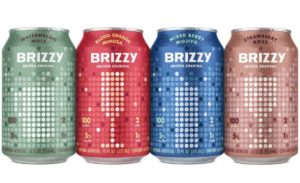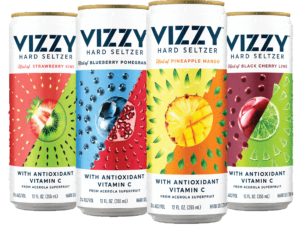The Supreme Court to Determine Whether Parody Dog Toys Are Allowable Under Federal Trademark Laws
By Susan Orona and Benni Amato on January 23, 2023
Author: Benni Amato
We previously wrote about the trademark and trade dress dispute between Jack Daniels and VIP Products’ “Bad Spaniels” parody toy here. Approximately two years later, the United States Supreme Court granted certiorari to weigh in on the case.
Original Motions for Summary Judgment
In 2016, the District Court of Arizona ruled on the parties motions for summary judgment. VIP Prod., LLC v. Jack Daniel’s Properties, Inc., No. CV-14-2057-PHX-SMM, 2016 WL 5408313 (D. Ariz. Sept. 27, 2016). The district court ruled in Jack Daniels’ favor that its marks were valid and rejected VIP’s nominative fair use defense and First Amendment fair use defense. The district court held a four-day bench trial on Jack Daniels’ claims for trademark infringement and dilution in 2017. In 2018, the district court issued a Findings of Fact, Conclusions of Law, and Order that VIP’s Bad Spaniels toy infringed on and diluted Jack Daniels’ trademark and trade dress and issued an injunction prohibiting VIP from selling the Bad Spaniels toy. VIP Prod., LLC v. Jack Daniel’s Properties, Inc., 291 F.Supp.3d 891, 897 (D. Ariz. 2018).
Ninth Circuit Reversal
VIP appealed to the Ninth Circuit Court of Appeals. In 2020, the Ninth Circuit affirmed that Jack Daniels’ trademarks were valid and that VIP’s nominative fair use defense was not, but reversed the district court’s other findings. VIP Prod. LLC v. Jack Daniel’s Properties, Inc., 953 F.3d 1170, 1172 (9th Cir. 2020). The Ninth Circuit found that VIP did not dilute the Jack Daniels marks because the Bad Spaniels toy was used to convey a humorous message, which the First Amendment protected. Further, because the Ninth Circuit found the Bad Spaniels toy to be an expressive work, no likelihood of confusion analysis could take place unless Jack Daniels established one of the two Rogers test requirements—namely, whether VIP’s use of the mark was either “not artistically relevant to the underlying work,” or “explicitly misleads consumers as to the source of content of the work.” In 2020, Jack Daniels filed a petition for certiorari to the United States Supreme Court, which was denied in early 2021. Jack Daniel’s Properties, Inc. v. VIP Prod. LLC, 141 S. Ct. 1054 (2021).
Summary Judgment on the Rogers Test
On remand to the district court, VIP moved for summary judgment, arguing that Jack Daniels could not satisfy either prong of the Rogers test. As to the first prong of artistic relevance, the district court noted that under the Rogers test, any non-zero level of artistic relevance is sufficient. VIP Prod. LLC v. Jack Daniel’s Properties Inc., No. CV-14-02057-PHX-SMM, 2021 WL 5710730 (D. Ariz. Oct. 8, 2021). Since the Bad Spaniels toy relies on Jack Daniels’ trade dress as its punchline, it was found to be artistically relevant.
As to the second prong of being explicitly misleading, the district court noted that this “is a high bar that requires the use to be an explicit indication, overt claim, or explicit misstatement about the source of the work.” Consumer perception or confusion is irrelevant; instead, what is relevant is: (1) the degree to which VIP used the mark in the same way as Jack Daniels, and (2) the extent to which VIP added its expressive content to the work beyond the mark itself. Although the Bad Spaniels toy heavily imitated the Jack Daniels trade dress, nearly every element was altered with VIP’s expressive content. Thus, Jack Daniels could satisfy neither prong of the Rogers test.
That said, the district court criticized the Rogers test, as almost no court has ever found a mark to be irrelevant to a junior use, and the “explicitly misleading” standard displaces the likelihood of confusion test and excuses almost every use short of “slapping another’s trademark on your own work and calling it your own.” Nonetheless, the district court noted that it was bound by Ninth Circuit precedent and ruled in VIP’s favor. The Ninth Circuit affirmed the district court’s rulings, and Jack Daniels again petitioned the Supreme Court for certiorari, the questions on appeal virtually identical to its first petition. VIP Prod. LLC v. Jack Daniel’s Properties, Inc., No. 21-16969, 2022 WL 1654040 (9th Cir. Mar. 18, 2022). This time, however, the Supreme Court has granted certiorari. Jack Daniel’s Properties, Inc. v. VIP Prod. LLC, 143 S. Ct. 476 (2022).
Questions Before the Supreme Court
The questions before the Supreme Court are (1) whether the Bad Spaniels parody products are subject to the traditional likelihood of confusion test or the Rogers test that provides heightened First Amendment protection, and (2) whether the Bad Spaniels parody products are “non-commercial” under 15 USC § 1125(c)(3)(C) and thus prevented from a trademark dilution by tarnishment claim. Previously, the Ninth Circuit had reasoned that speech is non-commercial “if it does more than propose a commercial transaction…and contains some ‘protected expression’…even if used to ‘sell’ a product.” Because the Bad Spaniels product was used to “convey a humorous message” protected by the First Amendment, the Ninth Circuit ruled that VIP was entitled to summary judgment regarding federal and state law dilution claims. The parties are briefing the Supreme Court on these issues, and while no dates have been set for oral arguments, we anticipate the Supreme Court will issue a decision by the end of this year.
About the Author: Benni Amato is a partner in Gordon Rees Scully Mansukhani’s Intellectual Property Practice Group. Her practice focuses on litigation matters involving trademarks, copyright, trade secrets, patents, internet issues, cybersecurity, contractual disputes, domain name arbitrations, and trademark and copyright prosecution and licensing. Ms. Amato’s biography can be found here.

 On September 1, 2019, Future Proof launched “Brizzy,” a seltzer cocktail offering consumers a refreshing alcoholic beverage with only 100 calories, 2 carbs, 1 gram of sugar and 5% alcohol by volume. Brizzy flavors include Watermelon Mule, Strawberry Rose, and Mixed Berry Mojito. Future Proof applied to register the Brizzy mark with the USPTO in November 2018. Originating in Austin, Texas, the products can now be found in over 1,000 retail locations in four states with plans to expand into more states this year.
On September 1, 2019, Future Proof launched “Brizzy,” a seltzer cocktail offering consumers a refreshing alcoholic beverage with only 100 calories, 2 carbs, 1 gram of sugar and 5% alcohol by volume. Brizzy flavors include Watermelon Mule, Strawberry Rose, and Mixed Berry Mojito. Future Proof applied to register the Brizzy mark with the USPTO in November 2018. Originating in Austin, Texas, the products can now be found in over 1,000 retail locations in four states with plans to expand into more states this year. Molson Coors’s hard seltzer, “Vizzy,” is advertised as “the only hard seltzer with antioxidant Vitamin C.”2 It similarly offers 100 calories, 2 carbs, 1 gram of sugar and 5% alcohol by volume. In September 2019, Molson Coors filed an application to register the Vizzy trademark. Vizzy flavors include “hint of” pineapple mango, black cherry lime, blueberry pomegranate, and strawberry kiwi.
Molson Coors’s hard seltzer, “Vizzy,” is advertised as “the only hard seltzer with antioxidant Vitamin C.”2 It similarly offers 100 calories, 2 carbs, 1 gram of sugar and 5% alcohol by volume. In September 2019, Molson Coors filed an application to register the Vizzy trademark. Vizzy flavors include “hint of” pineapple mango, black cherry lime, blueberry pomegranate, and strawberry kiwi.

